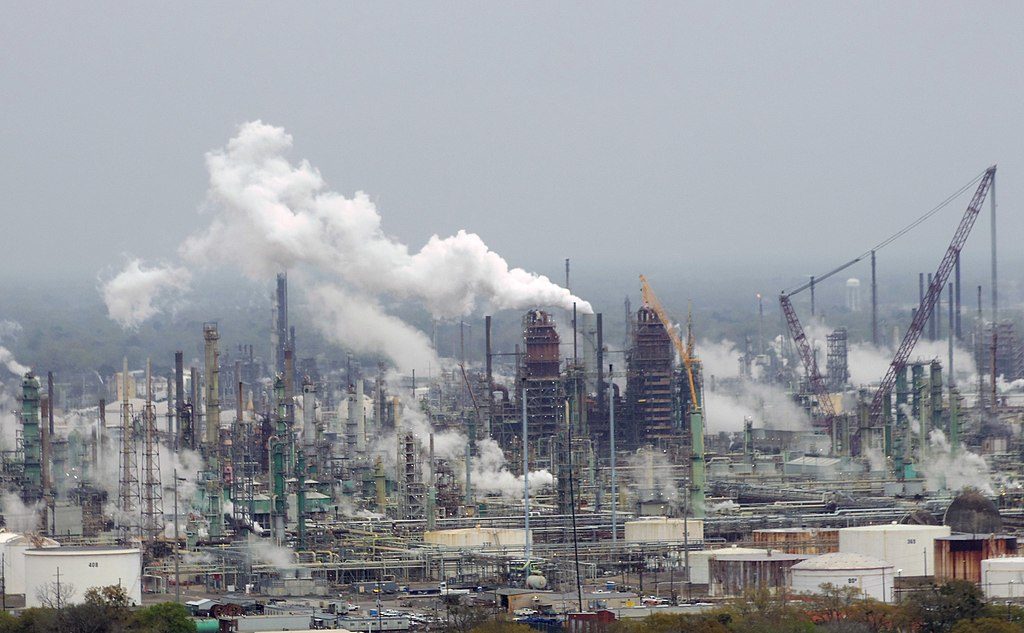House Subcommittee Considering Clean Air Act Amendments to Weaken Bedrock of Stationary Source Permitting
Proposed changes to NSR could have significant impact on EJ communities
The House Energy and Commerce Subcommittee on Environment is currently considering amendments designed to weaken the New Source Review permitting program. The GOP proposal has been floating around since a discussion draft was released in May based on a bill introduced last year by Rep. Morgan Griffith (R-Va.), but seems to have flown under the radar until the Subcommittee announced a markup this week. These so-called “clarifying” amendments could have substantial impacts on fenceline communities already overburdened with air pollution.

New Source Review (NSR) is the pre-construction review permitting program for air pollution from large stationary sources like power plants and petroleum refineries. New major sources of air pollution and existing sources making major modifications are required to submit applications to the relevant regulatory agency (usually a state or local agency – here in Los Angeles, it’s the South Coast AQMD) before starting construction. The regulatory agency then reviews those applications and issues permits-to-construct requiring state-of-the-art air pollution controls to ensure that any potential increases in air pollution are mitigated to the maximum extent possible. The process on the ground is of course a bit more complicated, and differs depending on whether the area where the source is located is in attainment with the National Ambient Air Quality Standards (NAAQS) for the pollutant(s) being emitted. But it’s not necessary to dive that deep into the weeds to understand the current amendments.
The GOP’s proposal would amend the Clean Air Act such that only those changes that increase the hourly rate of emissions from the source would be considered “modifications” subject to NSR. This contrasts with the current definition, which covers “any physical change in, or change in the method of operation of, a stationary source which increases the amount of any air pollutant emitted by such source or which results in the emission of any air pollutant not previously emitted.”
This change is significant because it creates a giant loophole for industry: sources can increase the hours of operation for existing sources (and thus the actual overall pollution emitted from the source) without undergoing NSR review — so long as the hourly average remains the same. This might seem like a minor change, but it has substantial implications due to one of the biggest weaknesses of the NSR program: its grandfathering problem.

Congress generally exempted existing stationary sources from meeting new standards under the Clean Air Act, assuming that pollution controls would gradually be phased in as old equipment was upgraded under a modification triggering NSR, or retired and replaced with new equipment subject to NSR. However, contrary to Congressional expectation, refineries and power plants have hung on to grandfathered equipment far beyond their expected lifetimes, indefinitely postponing modifications and upgrades in order to avoid being required to install expensive air pollution control equipment under NSR. The EPA has been trying to deal with this problem for decades, issuing an Enforcement Alert in 1999 that the agency believed regulated industries were misleading regulators to get out of NSR. (The EPA was, of course, correct — virtually all major US refiners would enter global consent decrees over the next decade accepting some applicability of “new source” standards to old equipment as a result of Clean Air Act violations.)
The NSR modification provisions are one of the very few openings to regulate emissions from grandfathered equipment, ensuring that at the very least existing equipment can’t increase emissions without undergoing regulatory review. Now, the GOP is proposing to significantly weaken even that regulatory hook by giving these grandfathered sources a window to increase emissions without any kind of environmental review.
This is particularly problematic for environmental justice communities at the fenceline of these large stationary sources, who are already disproportionately impacted by air pollution. Under the GOP’s proposal, these communities would have to bear the burden of increased cumulative emissions from ancient equipment lacking modern air pollution controls.
The current proposal, while endorsed by the Trump EPA’s Office of Air and Radiation, is still early in the legislative process with a Subcommittee vote not expected until next week — but it’s certainly something to keep an eye on if it makes it out of committee. It’s hard to keep track of everything going on in our current frantic news cycle, but this an issue we can’t afford to let slip through the cracks.
UPDATE (July 17, 2018 @ 3:35PM) – HR 3128 was passed out of subcommittee today on a party line vote. Next up will be the full House Energy and Commerce Committee, who will likely take it up after the summer recess.
Reader Comments
5 Replies to “House Subcommittee Considering Clean Air Act Amendments to Weaken Bedrock of Stationary Source Permitting”
Comments are closed.







EPA ‘s endorsed this ruinous rule Proposal and actively supports this effort to gut existing Clean Air act rules— why am i not surprised. Treasonous, Corrupt Agency!
More dirty air is on the way thanks to EPA!
More Than 100 Civil and Human Rights Groups Call on Senate to Reject Kavanaugh:
“……..the rights of immigrants and persons with disabilities, LGBTQ equality, affirmative action and environmental protections all could be endangered by Kavanaugh joining the high court…….”
http://thehill.com/regulation/court-battles/397532-more-than-100-civil-and-human-rights-groups-call-on-senate-to-reject
I see you chose not to respond to my comment to you on yesterday’s Senate Update article.
In Reply to a Beloved Brother Regarding the Kavanaugh SCOTUS Nomination:
“……….In discussing the potential impact of a Kavanaugh nomination on black Christians, we must not feign ignorance of the fact that Democrat and Republican presidents alike, especially in recent decades, have leveraged the authority granted them under the Appointments Clause of the U.S. Constitution to appoint men and women to the Supreme Court in an effort to, for better or worse, embed their personal worldview into law and thus affect the philosophical and ideological direction of this country in perpetuity (as Supreme Court appointments are for life).
Given this reality, it would be naive, to say the least, to deny that President Obama had in view the legalization of same-sex marriage when he nominated both Kagan and Sotomayor to the Supreme Court…….”
https://www.christianpost.com/voice/in-reply-to-a-beloved-brother-regarding-the-kavanaugh-scotus-nomination.html
Here on an environmental forum, you seem to always want to divert the conversation to gay marriage. I appreciate you illustrating that deniers have no rational case to make for their views.